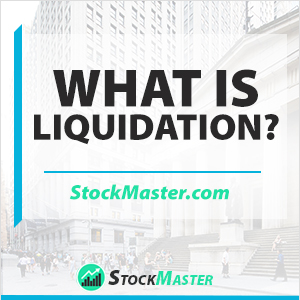 What is Liquidation?
What is Liquidation?
Definition: Liquidation is an event that occurs when a business is no longer able to meet its financial obligations. In this case, the process of ending the business is triggered, resulting in the distribution of business assets to claimants. The underlying assets are often used to settle any financial obligations that the business owes creditors as well as shareholders.
Liquidation is common in bankruptcies whereby businesses are forced to shut down on failing to support themselves financially. In this case, a court may take control of all the assets. The assets are usually auctioned in order to generate funds used to settle any outstanding debts. In instances where there are not enough assets to pay off creditors, secured creditors are usually given the first priority.
Some of the assets that are usually auctioned or distributed to creditors, as part of the liquidation process, include furniture, machinery, vehicles packing supplies as well as office equipment and store fixtures.
Contrary to perception, liquidation does not always involve bankruptcies proceedings. In some cases, a business might decide to close down a department or divisions. What would follow most of the time is the sale of any underlying assets with the funds going to settle any financial obligations tied to the divisions.
Liquidation also happens when investors in partnerships or corporations decide to end a business. In this case, they might agree on the sale of the company’s assets with the proceeds distributed down the line depending on the amount of shares that shareholders own, in what is often referred to as liquidating dividend. However, the distribution will only happen upon the liquidator, settling any of the company’s liabilities. Likewise, 75% of shareholders must approve the motion to liquidate the entire business.
Likewise, a business owner can decide to liquidate his or her business for a variety of reasons. Liquidation can, occur even when the business is able to meet its financial obligations on time
Liquidation Asset Distribution Example
Assets distribution as part of a business liquidation process is usually carried out based on the priority of the various parts involved. The three major classes of creditors taken into consideration are:
Secured Creditors
The most senior claims given the priority when it comes to asset distribution belong to secured creditors. These class of creditors maintain a lien against a business undergoing liquidation, which acts as an agreement, or commitment for the payment of whatever is borrowed. The creditors are obliged by law to seize any asset used as collateral to settle any financial claims.
Unsecured Creditors
Unsecured creditors don’t maintain a lien with a business; thus, their claims are usually settled after secured creditors’ needs are addressed. They include bondholders as well as any owed taxes or unpaid wages.
Stakeholders
Stakeholders maintain no formal claim on the assets of a business undergoing liquidation. In most cases, these people who have a stake in the success of a business.
Liquidation Specialists
A number of businesses specialize in liquidation matters. Such businesses provide leeway for liquidating businesses to sell their assets to be able to raise funds to settle claims with creditors. While most liquidators are retailers, they tend to buy assets for a fraction of the retail value and resell them in their stores at a profit.
Similarly, a liquidator may be assigned to oversee the liquidating process by a court of law. The liquidator, in this case, would be tasked with the responsibility of taking stock of a company’s assets to ensure they are auctioned and the funds distributed appropriately to deserving creditors. Likewise, creditors have the right to investigate all company’s affairs to ensure all assets are accounted for. Similarly, they must ensure that assets are sold at the right market value.
